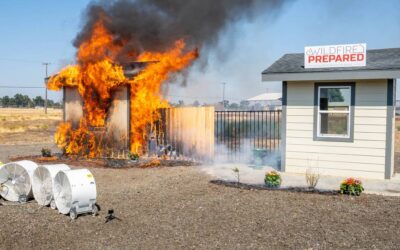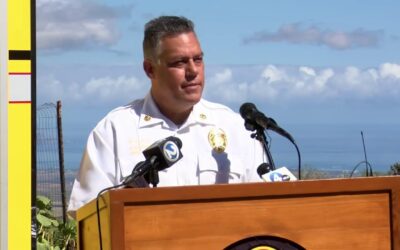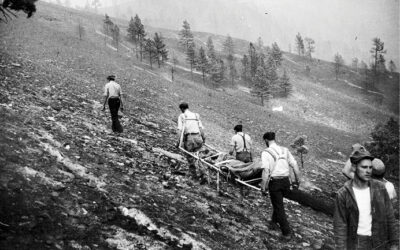Is your structural fire-based department prepared?

By John B. Tippett Jr., FireRescue Magazine Issue 3 | Volume 8
The National Wildfire Coordinating Group (www.nwcg.gov) defines the wildland/urban interface (WUI) as, “The line, area, or zone where structures and other human development meet or intermingle with undeveloped wildland or vegetative fuels.” Further, the IAFC’s Ready, Set, Go! (RSG) program website (www.wildlandfirersg.org ) states that the WUI includes “… areas where homes are built near or among lands prone to wildland fire,” and goes on to state that fire departments may use different terms (e.g., brush fire, forest fire, rangeland fire) to characterize fires in undeveloped areas.
When brush fire threatens occupied structures and developed communities, it becomes a WUI fire and takes on a whole new characterization. Using the definitions and language provided by the NWCG and Ready, Set, Go!, nearly every fire department serving an expanding community faces a WUI threat. This begs the question, “Is your structural fire-based department prepared to fight a fire in the interface?” Although the incident priorities don’t change if you’re a structural firefighter fighting a WUI fire, the strategies and tactics do. This month’s featured near-miss report provides an account that makes the case for ensuring that your department’s vulnerability assessment includes all types of risk.
Report Excerpt #09-823
“On a 600-acre brush fire, the fire was moving toward staged vehicles on the road. A storm front approached, creating a firestorm. The fire crossed the road. Several firefighters were caught in the middle. The firefighters did not have fire shelters. The fire moved quickly, making escape impractical. The firefighters hit the ground as fire passed overhead. No injuries occurred.”
Preparation
Step 1: Recognize that WUI incidents can (and will) occur in your service area, and you need to evaluate how such an event will affect your department well before it hits. You don’t want to end up in a situation where the first Type 1 engine gets on scene and makes a resource call that brings three additional Type 1 engines and two tankers (airworthy) when, in reality, you needed three Type 6 engines (aka brush trucks) and two Type 2 water tenders to handle the incident.
Step 2: Once you’ve identified your WUI threat, seek expert advice. This is where the “brotherhood” of the fire service pays its highest dividends. Establishing a relationship with a department that has extensive WUI experience can help ramp up your program.
Step 3: Evaluate your training program. How much wildland firefighting training has your department (and especially your officers) been subjected to? Most basic firefighting courses touch on wildland firefighting in recruit training. If that was the last training your officers had, and there is a WUI component to your community risk assessment, you need to add one more component to your officer training program.
Step 4: Evaluate if your PPE ensemble is adequate for the situation encountered. Structural firefighting ensembles are designed for structural firefighting, not tramping through woods and fields. Due to the nature of the equipment, structural firefighters will shed the bulky equipment, leaving them unprotected when the wind shifts and the fire is bearing down on them.
Prevention & Closing
The worst WUI incident is the incident a department is called to but not prepared for. Fires threatening structures can quickly overwhelm resources. Fuel loads seem endless, and unless structures are non-combustible and/or have defensible space, the structures are doomed. Investing in a vulnerability assessment will put your department on track to avoiding a strain on assets, both human and mechanical.
Many fire departments, particularly those in the Western states, seem able to handle WUI events with ease. They have worked these events for so long and have become so proficient that the event becomes part of their “norm.” The same cannot be said for all parts of the country. Strong aid agreements are necessary to marshal resources quickly as the incident escalates. Some areas of the country have done just that (i.e., MABAS, EMAC and an increasing number of smaller, regional department agreements that are being forged across the country) to ensure that they can quickly assemble the right resources to control the WUI event.
What it all boils down to is ensuring that a group of firefighters fighting a 6-, 60-, 600- or 60,000-acre wildland fire are properly trained, equipped and supported.
For more information on the WUI, visit www.wildlandfirersg.org and www.nwcg.gov.




